DISCOVER YOUR LOCAL BICYCLING COMMUNITY
Find local advocacy groups, bike shops, instructors, clubs, classes and more!
LCI Spotlight: Dr. Noemi Waight
The League certifies hundreds of League Cycling Instructors every year and there are thousands of LCIs across the country leading bike education efforts in their communities. In our LCI spotlight series, we share the stories of League Cycling Instructors doing what they do daily: educating, mentoring, and empowering. You don’t have to be an extraordinary athlete or overachieving student to be a stellar LCI, all you need is the conviction that life is better for everyone when more people ride bikes.
This month, we’re excited to share an insightful and heartfelt conversation with Dr. Noemi Waight, Associate Professor of Science Education in the Department of Learning and Instruction at the University at Buffalo. Dr. Waight’s academic research focuses on understanding the integration of technology into K-12 science education and STEM, a passion she brings to life through the innovative STEMcyclists Summer Camp. Her nominator captures her impact: “Dr. Waight’s work to empower students of color through the combination of STEM and cycling education is incredibly inspiring.” We couldn’t agree more. Keep reading to discover a story that’s sure to inspire you too!
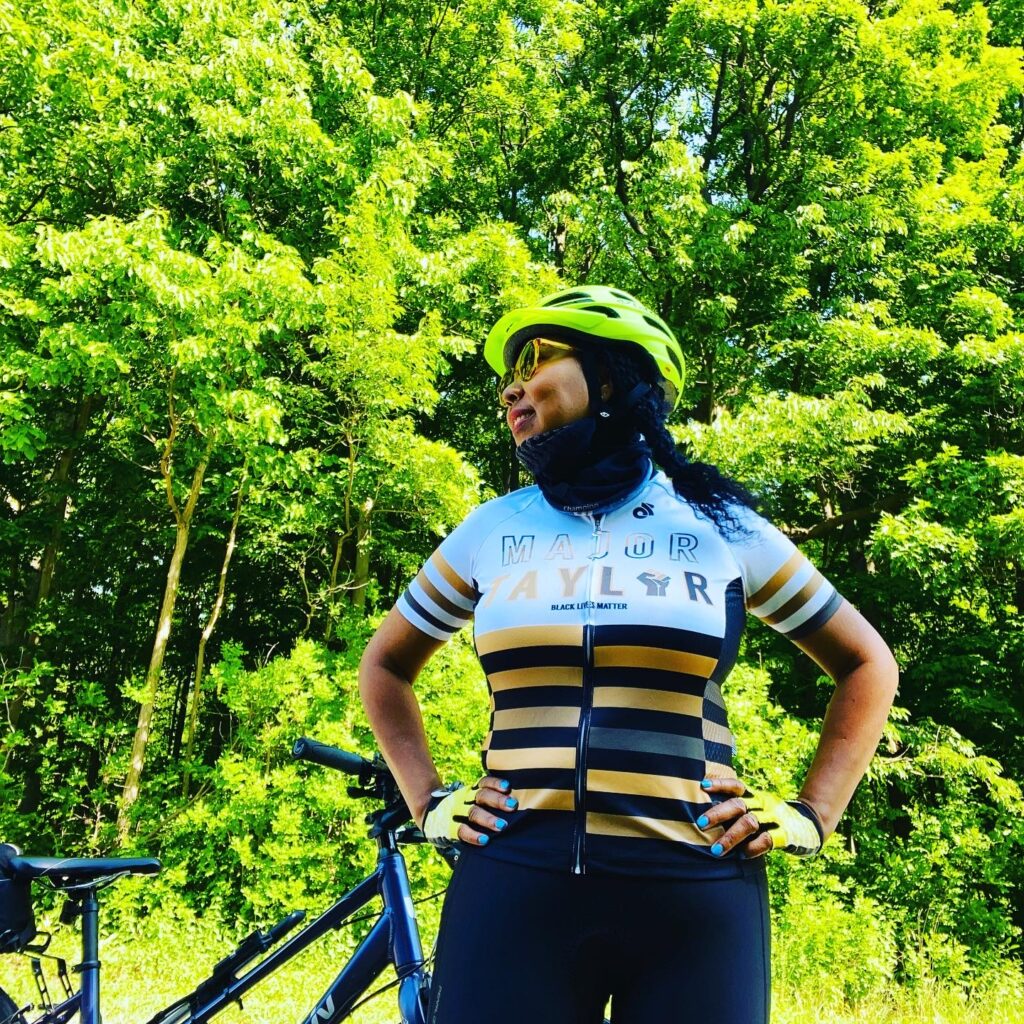
Tell us a little about yourself and why you enjoy teaching bike education.
My bike education journey started with me simply being out in the community on my bike, joining in rides with East Side Bike Club and Slow Roll Buffalo. We also formed a smaller group in the pandemic, the Buffalo Autobots, to get out and explore different nooks and crannies of our community. While I was out on these group rides, I reflected on how what we’re doing in biking is all science. Both the bike itself and the enduring history of bike design is all engineering. So I kept thinking: how can we bring this together to help our kids learn science and engineering through the bicycle?
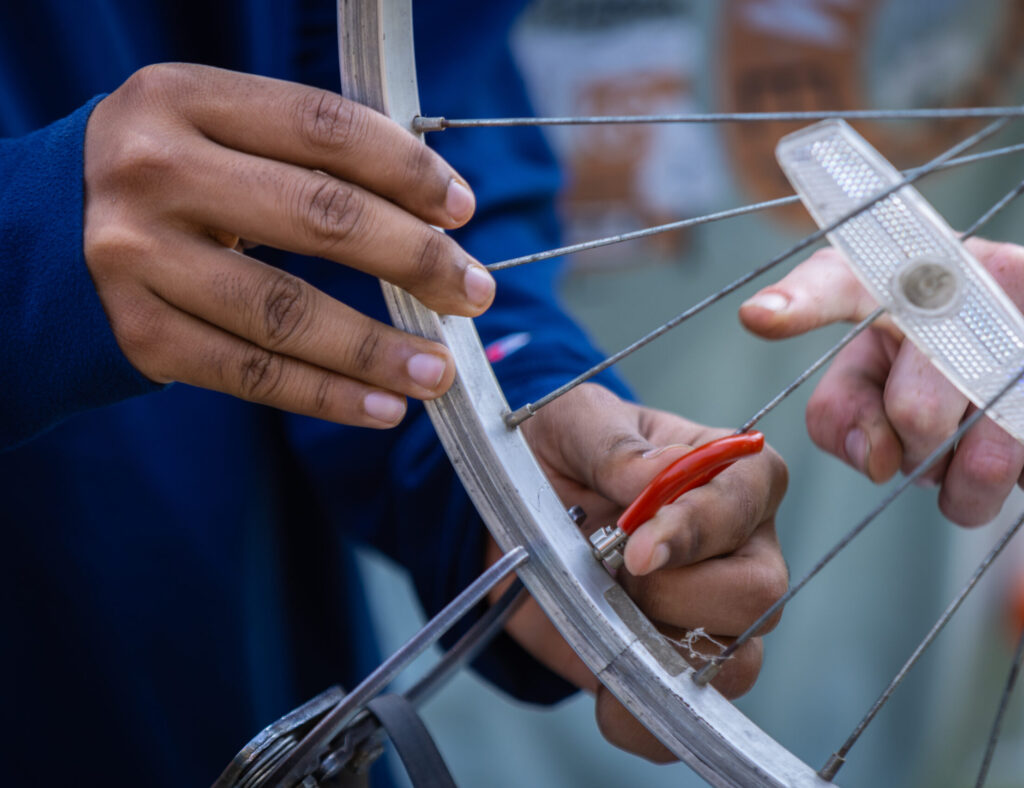
I’m particularly inspired by the idea of transparent technology — a system where you can see all its parts, remix it and fix it. Bikes are one of the few technologies where we can still do that, and it’s exciting to see it in action. Once our students rebuild a bike, after they’ve put sweat and time into making it theirs, our kids can’t wait to be out riding. Their enthusiasm tells us how important this is. It tells us if we spent more time supporting and facilitating that experience for students everywhere, we could have more kids outside on bikes with access to safer spaces to ride.
What first motivated you to become an LCI?
GObike Buffalo and the East Side Bike Club funded an LCI Seminar aimed at getting more Black and Brown LCIs in Buffalo. I was selected with a few others who became LCIs last year. Until that opportunity, I had no idea this was a pathway for us. Recognizing the League — and the bicycling community as a whole — has historically excluded people of color, it’s important for us to take up space, to be loud and show up as ourselves in the bike movement. And it’s happening! I already have another one of my friends becoming an LCI. I am so appreciative of these clubs for giving us this platform because it has been amazing to have this experience. As an LCI I have participated in bike rodeos, where we come into the community neighborhoods to teach kids how to ride bikes safely.
Why do you think bike education is so important for youth?
Part of it is representation. Our STEMcyclists Summer Camp provides an opportunity for Black and Brown youth to use bikes as a medium to learn about science, technology, engineering, and math. Through the bicycle, we can tap into the brilliance of our students and empower them to pursue careers in STEM fields.
It’s also about representation in public spaces, on the streets and trails. Our youth have a right to be on our streets, on bikes, together. As youth join together, it emphasizes how bikes are a potential pathway for advocacy and community organizing. Only when we are on the bike, do we start to experience as cyclists what it’s like to have access to safe cycling pathways and bike lanes. We recognize this infrastructure should also be in communities of color. So what better way to advocate for this change than to have students of color speaking up for their own communities?
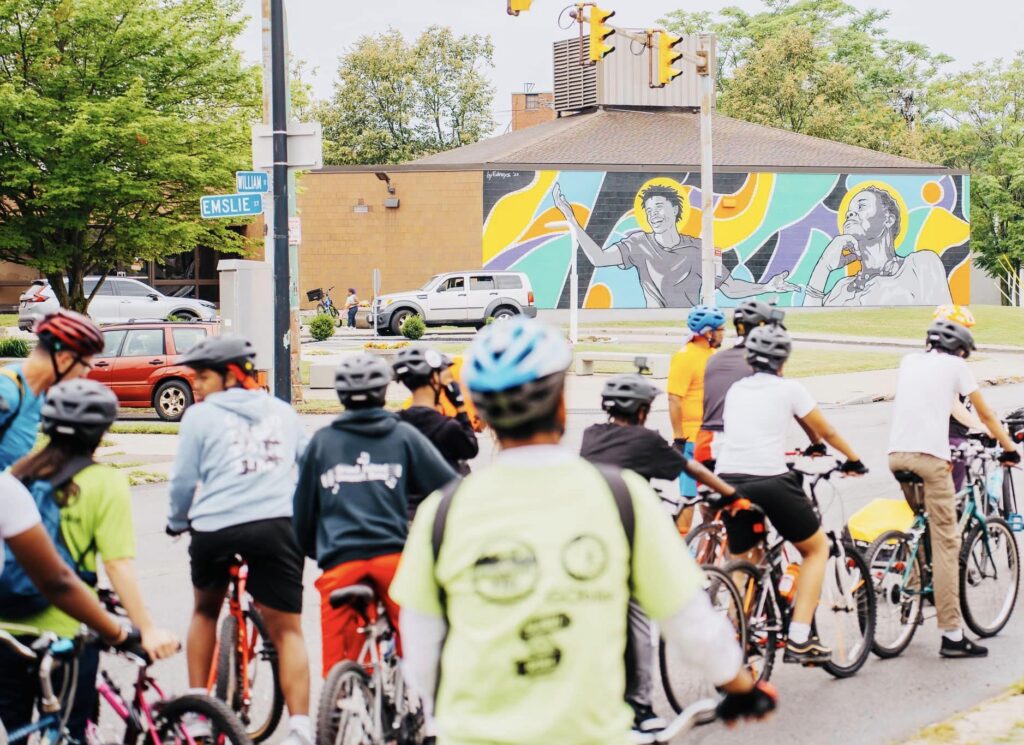
Tell us more about your STEMcyclists summer camp.
Our STEMcyclists Summer Camp is “a science and engineering summer cycling program where students learn the science, engineering principles, and biomechanics of bikes and bike riding.” Kids at our camp spend time rebuilding their bikes, learning the science of how the bike works, and using the bike to explore STEM in the community. We venture out to various sites with historical, cultural and social significance. People think about marginalized communities and associate them with poverty but our communities are so rich in history and culture, and it’s powerful to explore and celebrate that richness together.
We’ve run this program for three years now. The first two years were in collaboration with UB STEP (Science and Technology Entry Program). This is the third year, but it’s the first year we’ve run it with funding from the National Science Foundation. We are honored to receive 1.9 million dollars for three years to develop, conduct research, and shape a model of sustainability for this program. We’ve been able to grow this program to reach 25 students this year, over double the number of students reached in previous years. This program also wouldn’t happen without partners GOBike Buffalo — they are amazing at advocacy, education, and policy. Slow Roll Buffalo, Connecting Communities, and East Side Bike Club promoting cycling and health in communities of color, are also incredible partners of ours. Tufts University and UMass Amherst are also institutional partners with this work. Importantly though, my CO-PIs, especially Ryan Rish, our graduate students, mentors, and countless community members have poured time and love into this program. I have so much appreciation for their time and contributions.
What has been your greatest reward so far in teaching bike education?
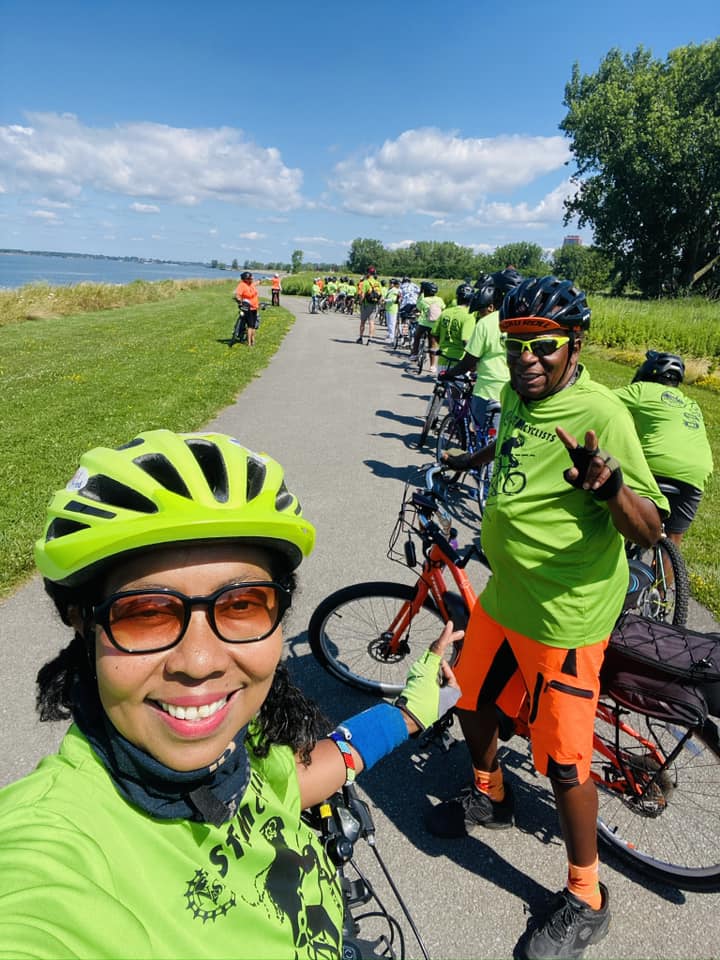
For me, the reward is to simply have more people of color on bikes. During our bike rides last week, there were two young women riding next to each other, relaxed and having wonderful conversations, just being… I want that representation in our community. I want to see Black and Brown students thriving, having fun and just being joyous. I think about representation a lot, even in the winter when I’m out snowshoeing, I look around to see — who’s on the trails? Who is having this experience? It is so important to see people who look like you out there.
Also, the joy of biking is a reward in itself. Riding a bike is immensely joyous, and such a boost for physical and mental health. I always say that biking saved my life. As a professor navigating tenure, there was a time when I wasn’t sure if I wanted to stay in academia. It’s not always a friendly, welcoming and inclusive space for people of color.
It was during this time of reflection that I got my bike as a way to relieve stress. Biking is where I would bring my tears and release them to the wind, it is where I brought my sadness and my frustrations. But it was also the space where I would relax, think, push the limits, smile, laugh, and experience joy. I got out there, started learning about my community, and found so many opportunities to meet people and be in community with others. Biking was my #counterspace. It is in fact how this STEMcyclists program came together — all the bike organizations I’ve collaborated with are because of the people I met out on my bike, riding in the community, connecting, talking, and sharing. Honestly, I just love to be on my bike and want more people to have that joy.
What is something you think all LCIs should know about teaching bike education?
There’s a pedagogical approach to teaching our kids, in everything from bike maintenance to safe cycling. For myself as an educator, I felt that our approach at STEMcyclists is all constructivist and asset-based — doing, hands-on and minds-on, and then assessing from that point. For the most part, this learning happens outside of classroom walls. We learn when we experience phenomena in context; students as learners construct their understandings based on these experiences. Cycling gives us an opportunity to go out and practice an activity, and then come back and reflect, and revisit concepts. For example, one of our kids asked about signaling: “How do drivers know what our signals mean?” We explored the idea that, in fact, some drivers may not know what hand signals mean. This gives us an opportunity to educate others, like our family and friends. When we see cyclists on the road, we can tell our mom and dad that we should slow down and give them space.
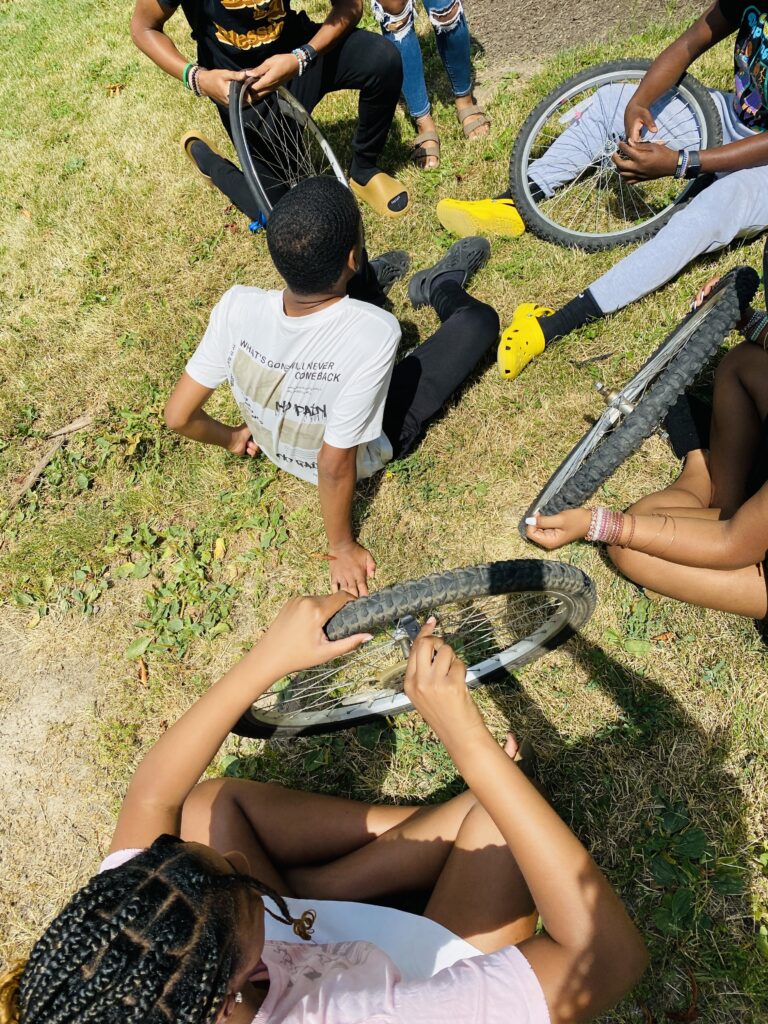
Another important consideration for educators is that the experiences of our youth matter. Sometimes our students have never biked before, or haven’t in a long time, so it’s important to assess their skills. It’s also critical to create a space for safe dialogue. When our kids haven’t been on bikes in a long time, there’s often anxiety and fear. We try to build up their confidence by adapting routes so that their first ride is on campus, where streets are safer to ride.
In your personal experience, what is your favorite thing about being on a bike?
I love celebrating every ride and every hill, because it’s so important for people to see people like me on a bike. I wear a brace on my left leg and I have a limp. Hills are the hardest for me as someone who is differently abled (I describe myself this way being fully cognizant of the politics of naming disability), but I like that it gives me a challenge. I’ll cuss a lot in the process, but it’s an amazing experience to accomplish small feats like that. It pushes me to be better. I see so many parallels with my personal life — having the determination to accomplish really difficult challenges. Being on my bike has also taught me to be myself and not to take myself too seriously. When you fall, you just get back up. Or if you can’t ride up the hill, you can walk it up. It helps you to go easy on yourself in ways that we as a society don’t always encourage. I also love riding my bike because it involves being outside, with nature. You see, smell, feel, and hear all the nuances and details of nature.
Give us an interesting or funny fact about you.
I’m a traveler and I bike all over the world! In fact, I just recently biked across to Canada on the Peace Bridge. I will travel to bike anywhere, but I am originally from Belize. Growing up, my mom would always ask me to run errands for her, and I always did that on my bike. I loved the opportunity to move around independently and traverse more space than I could by walking. Back then I saw it as transportation and didn’t think about it too much. Looking back now, I realize it was transformative. Running errands and navigating roads on my bike back in the day was so important, because it helped develop my own facility and sense of self-confidence to ride now. I now look back and realize that my mom used the bike to teach me about freedom, what it means to fly and boy, did I fly.